There has never been a time when forestry has received so much attention in Ireland. Successive Climate Action Plans have identified afforestation as the most important land use in achieving carbon neutrality by 2050, while homegrown timber is seen as a major sustainable resource in displacing fossil-based material in the construction and energy sectors.
Against this backdrop, forestry should be flourishing – but it’s not.
This year, Ireland is likely to have the lowest afforestation since the 1920s, as the current forestry programme has yet to be ratified by the European Commission for State Aid approval.
Paul McMahon’s Island of Woods: How Ireland Lost Its Forests and How to Get Them Back explores the minefield of social, political and environmental factors that have influenced Irish forestry from the outset.
He not only reconnects with Ireland’s once-bountiful wooded landscape, he also provides solutions on how we might “get them back”.

Paul McMahon argues for mixed age, mixed species continuous cover forestry. \ Donal Magner
He charts the rise and fall of our forest resource to the emergence of the pioneer tree species, 15,000 years ago after the Last Glacial Maximum.
There is broad agreement on how Ireland was colonised with vast primeval forests; consensus, too, on the arrivals of the first hunter-gatherers 12,500 years ago, whose impact was minimal.
It was when our ancestors began to use fire and wield their axes to clear large tracts of forests that difficulties arise on the rate of tree loss and who was responsible. While our ancestors worshipped trees, they also cleared them apace for agricultural expansion.
When faced with a choice between “a venerable old tree and a handsome bull, they would choose the latter”, according to McMahon, who claims that by the time the Vikings had arrived, Ireland’s forest cover was down to 20%.
The Vikings showed little interest in moving too far outside cities; they instead exploited the surrounding forests to build wooden houses in Waterford, but surprisingly, oak “was almost never used to construct houses” in Dublin, maintains McMahon.
Instead, the Vikings concentrated on building longships, such as the Dublin-built 30m Skuldelev 2, which was excavated in Roskilde Fjord, west of Copenhagen, in 1962.
McMahon’s section on the Anglo-Norman period paints a vivid picture of the transformation of the Irish landscape. This included the introduction of the manorial system, whereby villages were built close to the lord’s manor, and land use changed from pastoral to arable farming.
While our ancestors worshipped trees, they also cleared them apace for agricultural expansion
McMahon is positive about this period, when woodland management techniques were introduced.
Woodlands were managed by foresters in two layers: “standard” trees to provide timber for construction and shipbuilding, while the “underwood” was harvested for smaller timber lengths. This was largely sustainable, as felled trees were usually replaced.
By the 1170s, 20% of the land remained under forests, according to McMahon. However, at the height of Anglo-Norman influence by the end of the 13th century, it had decreased to 15%.
1600s onwards
There is a major debate on the rate of forest decline from 1600 onwards.
McMahon revisits Eileen McCracken’s Irish Woods since Tudor Times, and believes her estimation of 12.5% forest cover in 1600 is correct (if it includes scrubby woodland). In bringing McCracken back into focus, McMahon questions Oliver Rackam’s 2.5% forest cover estimate by 1656 as too low.
Apportioning blame on who was responsible for early forest decline – Gael or coloniser – is a debatable topic. After Kinsale, there is little doubt that deforestation accelerated.
During the 17th century, vast areas “changed hands as the Gaelic chiefs and Old English lords were punished for rebellions or for choosing the losing side in English civil wars”, according to McMahon.
“Changed hands” is one way of putting this confiscation, but by 1703, “just 15% of land was owned by Catholics”, he maintains.
This period marks the beginning of the end for Irish forestry.
Apportioning blame on who was responsible for early forest decline – Gael or coloniser – is a debatable topic
The parlous nature of Ireland’s woodlands is vividly and starkly illustrated by McMahon: “By 1711, the value of timber exports was £600, whereas the value of timber imports was a whopping £11,000.”
The decline of Irish forests had been unremitting over the centuries, but if there was a tipping point, this was it surely.
Members of the Dublin Society – now the RDS – decided that a forest grant scheme was required to reforest Ireland. Funds were supplied by society members in the 1740s and from Grattan’s parliament, up until the Act of Union in 1800. This is likely to be the first ever State-private afforestation scheme in the world.
It partially stemmed the tide, but results were modest.
McMahon quotes the registrar of the Dublin Society, who said the scheme “did not lead to the creation of a single plantation on a really large scale”.
The State eventually decided to take the lead in reforesting Ireland, which it did for most of the last century before entering a State-private – mainly farmer – partnership in the late 1980s, which continues, although badly dented in recent years.
Continuous cover forestry
This leads to the book’s section on “how we can get our forests back”, as the author provides solutions that are likely to cause controversy on all sides, which might not be a bad thing.
McMahon is unimpressed by the “native trees only” argument and is also critical of current forest management practices.
So he argues for a forest continuum and is critical of our total reliance on the practice of clearcutting.
McMahon proposes continuous cover forestry (CCF) as an ecological, economic and aesthetic solution, which few would dispute.
He says that CCF allows unevenly aged multispecies forests to develop regardless of their origin. It provides for a wide range of tree species – native, naturalised and exotic – and a more varied forest ecosystem.
However, even foresters who advocate CCF would urge caution on a blanket drive towards this system. Ideally, trees need to grow to a top height of 40m to maximise CCF, while many forest sites are vulnerable to windblow once they exceed 25m top height.
McMahon proposes continuous cover forestry (CCF) as an ecological, economic and aesthetic solution, which few would dispute.
McMahon urges us to drop “our fetishisation of native species [because] the definition of ‘native’ is arbitrary and reflects the situation at a single time”.
He broadens the species menu by going back to a time even before the last glaciation period, to discover species that he maintains were here, including spruce, fir, pine, beech, sycamore and walnut.
“And we can expect new species to arrive in the future, [because] 11,000 years since the last glaciations is a blip in geological time,” he writes.
“If plans are well-adapted and find a niche, [new species] will establish themselves and become part of the ecosystem.”
His call for an open mind on future species that adapt to our climatic conditions – including arrivals from western North America – is compelling, but will be resisted by those who only advocate natives.
Those who support a balanced mixed-species programme with wood and non-wood benefits are likely to be attracted to McMahon’s solutions.
Foresters and landowners who wish to combine ecological and economic forestry will welcome this debate.
Many will contest his estimate that one-third of all existing forests are “failed forests”, while acknowledging that most of the lodgepole pine plantations established on blanket peats were unsuccessful, which amounts to 9% of the total forest estate.
The author provides solutions that are likely to cause controversy on all sides, which might not be a bad thing
Planting western peats in the last century was as much a social as a silvicultural endeavour, which provided some excellent forests and much-needed employment during a period of rife emigration.
Lessons were learned and the practice of planting blanket bogs was discontinued two decades ago.
Island of Woods outlines not only the enormity of woodland loss in Ireland, but is also a practical discourse on how we might get our forests back and what they might look like.
McMahon deserves credit for outlining how ecological objectives can be achieved without loss of production and profitability.
Island of Woods: How Ireland Lost Its Forests and How to Get Them Back (216pp) by Paul McMahon is published by New Ireland Island Books (€19.95).
There has never been a time when forestry has received so much attention in Ireland. Successive Climate Action Plans have identified afforestation as the most important land use in achieving carbon neutrality by 2050, while homegrown timber is seen as a major sustainable resource in displacing fossil-based material in the construction and energy sectors.
Against this backdrop, forestry should be flourishing – but it’s not.
This year, Ireland is likely to have the lowest afforestation since the 1920s, as the current forestry programme has yet to be ratified by the European Commission for State Aid approval.
Paul McMahon’s Island of Woods: How Ireland Lost Its Forests and How to Get Them Back explores the minefield of social, political and environmental factors that have influenced Irish forestry from the outset.
He not only reconnects with Ireland’s once-bountiful wooded landscape, he also provides solutions on how we might “get them back”.

Paul McMahon argues for mixed age, mixed species continuous cover forestry. \ Donal Magner
He charts the rise and fall of our forest resource to the emergence of the pioneer tree species, 15,000 years ago after the Last Glacial Maximum.
There is broad agreement on how Ireland was colonised with vast primeval forests; consensus, too, on the arrivals of the first hunter-gatherers 12,500 years ago, whose impact was minimal.
It was when our ancestors began to use fire and wield their axes to clear large tracts of forests that difficulties arise on the rate of tree loss and who was responsible. While our ancestors worshipped trees, they also cleared them apace for agricultural expansion.
When faced with a choice between “a venerable old tree and a handsome bull, they would choose the latter”, according to McMahon, who claims that by the time the Vikings had arrived, Ireland’s forest cover was down to 20%.
The Vikings showed little interest in moving too far outside cities; they instead exploited the surrounding forests to build wooden houses in Waterford, but surprisingly, oak “was almost never used to construct houses” in Dublin, maintains McMahon.
Instead, the Vikings concentrated on building longships, such as the Dublin-built 30m Skuldelev 2, which was excavated in Roskilde Fjord, west of Copenhagen, in 1962.
McMahon’s section on the Anglo-Norman period paints a vivid picture of the transformation of the Irish landscape. This included the introduction of the manorial system, whereby villages were built close to the lord’s manor, and land use changed from pastoral to arable farming.
While our ancestors worshipped trees, they also cleared them apace for agricultural expansion
McMahon is positive about this period, when woodland management techniques were introduced.
Woodlands were managed by foresters in two layers: “standard” trees to provide timber for construction and shipbuilding, while the “underwood” was harvested for smaller timber lengths. This was largely sustainable, as felled trees were usually replaced.
By the 1170s, 20% of the land remained under forests, according to McMahon. However, at the height of Anglo-Norman influence by the end of the 13th century, it had decreased to 15%.
1600s onwards
There is a major debate on the rate of forest decline from 1600 onwards.
McMahon revisits Eileen McCracken’s Irish Woods since Tudor Times, and believes her estimation of 12.5% forest cover in 1600 is correct (if it includes scrubby woodland). In bringing McCracken back into focus, McMahon questions Oliver Rackam’s 2.5% forest cover estimate by 1656 as too low.
Apportioning blame on who was responsible for early forest decline – Gael or coloniser – is a debatable topic. After Kinsale, there is little doubt that deforestation accelerated.
During the 17th century, vast areas “changed hands as the Gaelic chiefs and Old English lords were punished for rebellions or for choosing the losing side in English civil wars”, according to McMahon.
“Changed hands” is one way of putting this confiscation, but by 1703, “just 15% of land was owned by Catholics”, he maintains.
This period marks the beginning of the end for Irish forestry.
Apportioning blame on who was responsible for early forest decline – Gael or coloniser – is a debatable topic
The parlous nature of Ireland’s woodlands is vividly and starkly illustrated by McMahon: “By 1711, the value of timber exports was £600, whereas the value of timber imports was a whopping £11,000.”
The decline of Irish forests had been unremitting over the centuries, but if there was a tipping point, this was it surely.
Members of the Dublin Society – now the RDS – decided that a forest grant scheme was required to reforest Ireland. Funds were supplied by society members in the 1740s and from Grattan’s parliament, up until the Act of Union in 1800. This is likely to be the first ever State-private afforestation scheme in the world.
It partially stemmed the tide, but results were modest.
McMahon quotes the registrar of the Dublin Society, who said the scheme “did not lead to the creation of a single plantation on a really large scale”.
The State eventually decided to take the lead in reforesting Ireland, which it did for most of the last century before entering a State-private – mainly farmer – partnership in the late 1980s, which continues, although badly dented in recent years.
Continuous cover forestry
This leads to the book’s section on “how we can get our forests back”, as the author provides solutions that are likely to cause controversy on all sides, which might not be a bad thing.
McMahon is unimpressed by the “native trees only” argument and is also critical of current forest management practices.
So he argues for a forest continuum and is critical of our total reliance on the practice of clearcutting.
McMahon proposes continuous cover forestry (CCF) as an ecological, economic and aesthetic solution, which few would dispute.
He says that CCF allows unevenly aged multispecies forests to develop regardless of their origin. It provides for a wide range of tree species – native, naturalised and exotic – and a more varied forest ecosystem.
However, even foresters who advocate CCF would urge caution on a blanket drive towards this system. Ideally, trees need to grow to a top height of 40m to maximise CCF, while many forest sites are vulnerable to windblow once they exceed 25m top height.
McMahon proposes continuous cover forestry (CCF) as an ecological, economic and aesthetic solution, which few would dispute.
McMahon urges us to drop “our fetishisation of native species [because] the definition of ‘native’ is arbitrary and reflects the situation at a single time”.
He broadens the species menu by going back to a time even before the last glaciation period, to discover species that he maintains were here, including spruce, fir, pine, beech, sycamore and walnut.
“And we can expect new species to arrive in the future, [because] 11,000 years since the last glaciations is a blip in geological time,” he writes.
“If plans are well-adapted and find a niche, [new species] will establish themselves and become part of the ecosystem.”
His call for an open mind on future species that adapt to our climatic conditions – including arrivals from western North America – is compelling, but will be resisted by those who only advocate natives.
Those who support a balanced mixed-species programme with wood and non-wood benefits are likely to be attracted to McMahon’s solutions.
Foresters and landowners who wish to combine ecological and economic forestry will welcome this debate.
Many will contest his estimate that one-third of all existing forests are “failed forests”, while acknowledging that most of the lodgepole pine plantations established on blanket peats were unsuccessful, which amounts to 9% of the total forest estate.
The author provides solutions that are likely to cause controversy on all sides, which might not be a bad thing
Planting western peats in the last century was as much a social as a silvicultural endeavour, which provided some excellent forests and much-needed employment during a period of rife emigration.
Lessons were learned and the practice of planting blanket bogs was discontinued two decades ago.
Island of Woods outlines not only the enormity of woodland loss in Ireland, but is also a practical discourse on how we might get our forests back and what they might look like.
McMahon deserves credit for outlining how ecological objectives can be achieved without loss of production and profitability.
Island of Woods: How Ireland Lost Its Forests and How to Get Them Back (216pp) by Paul McMahon is published by New Ireland Island Books (€19.95). 



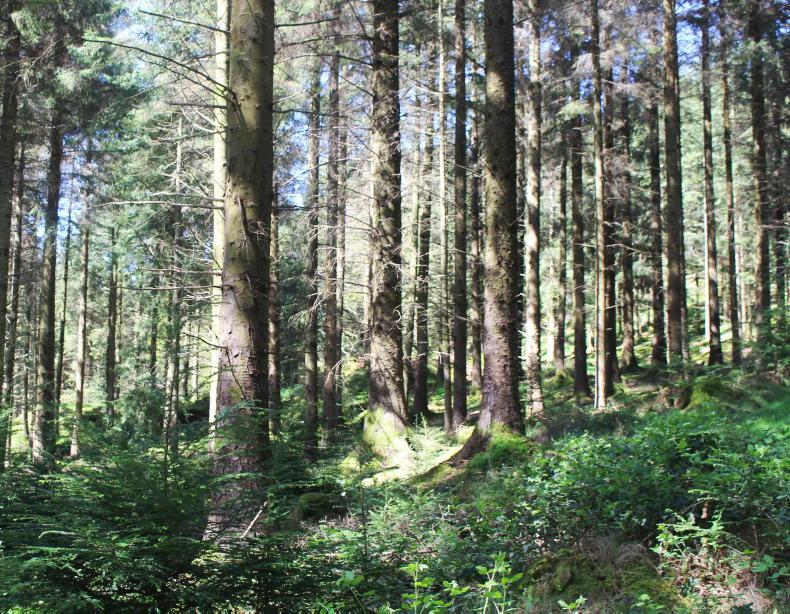

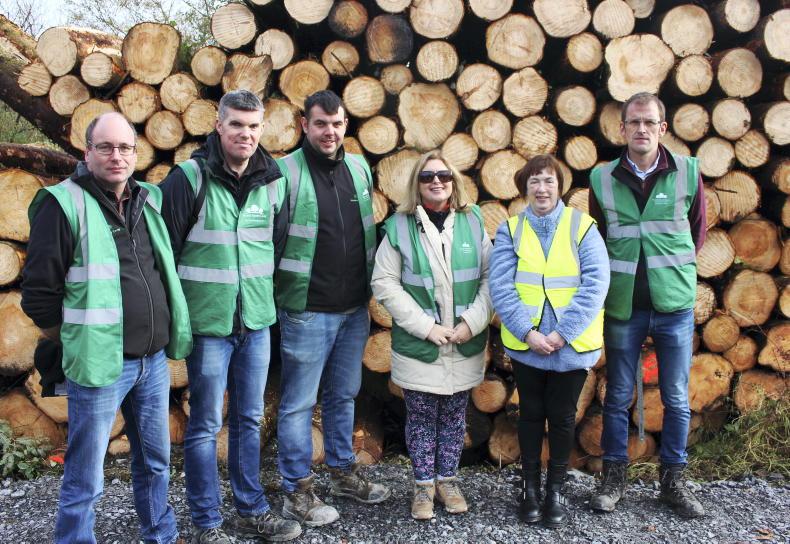
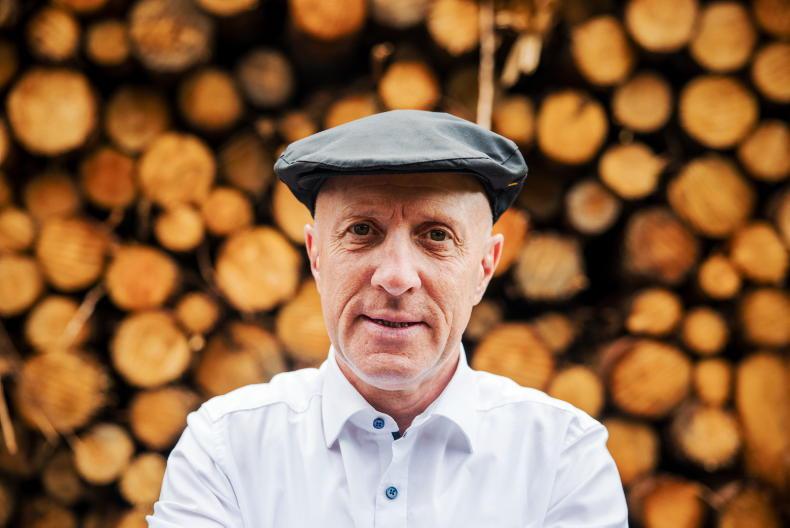
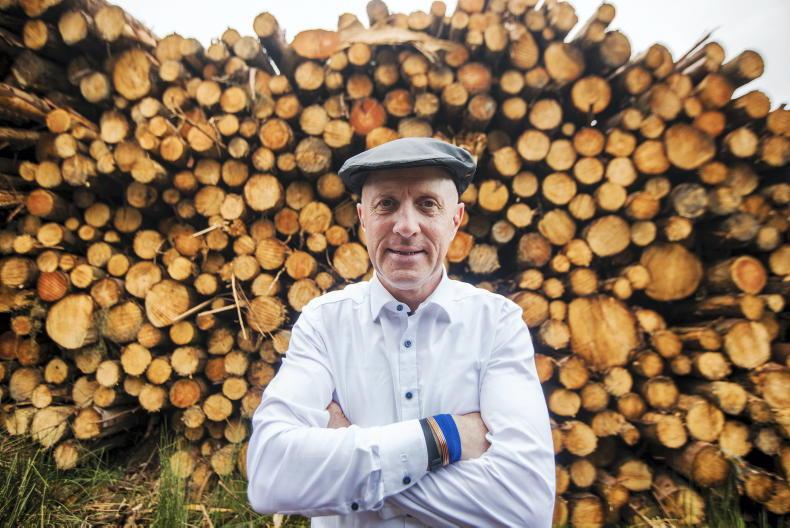
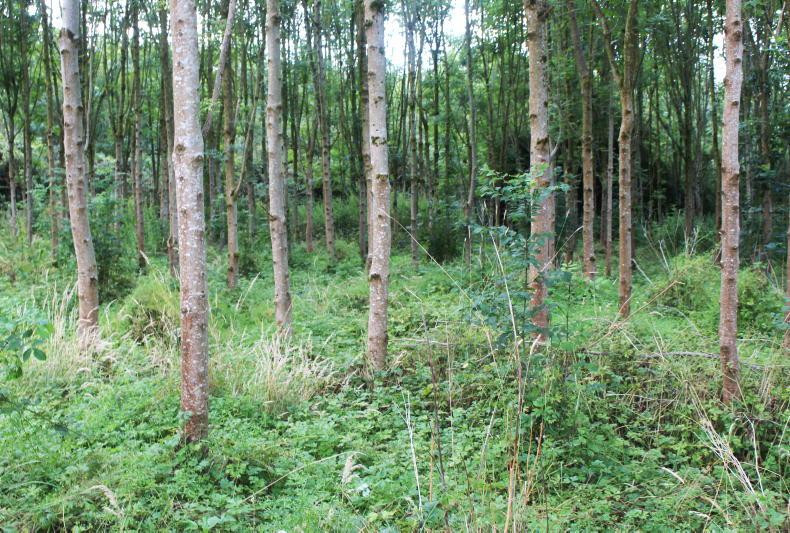
SHARING OPTIONS